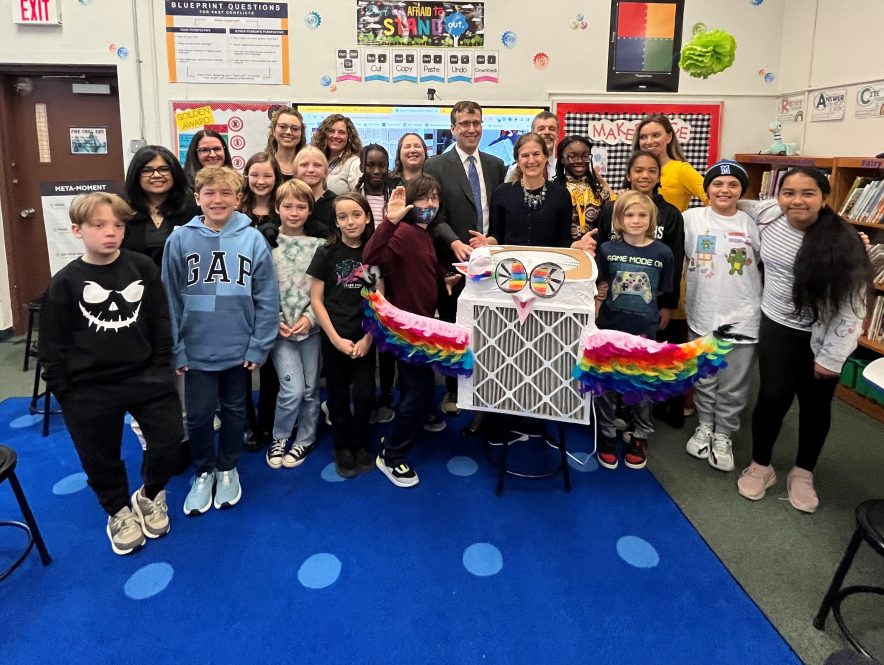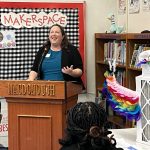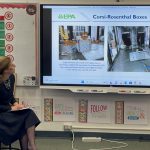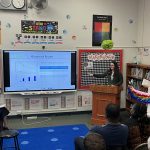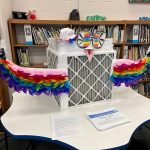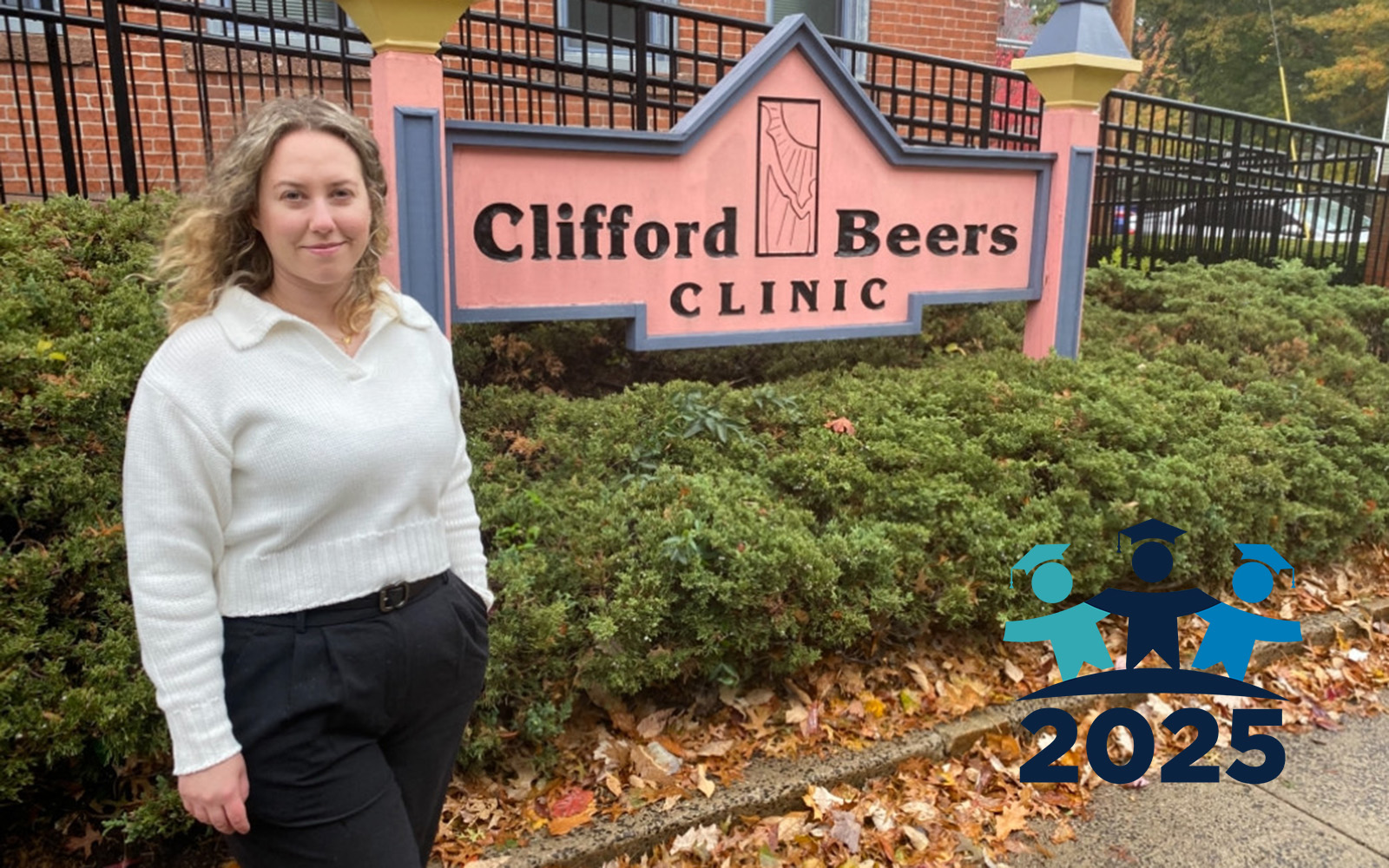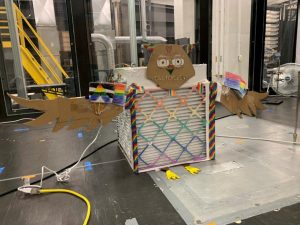
There is a low-cost way for you to protect yourself and reduce your risk of respiratory diseases such as flu, RSV, and COVID-19. Build yourself a Corsi-Rosenthal box (CR box) in 30 minutes with just $60 worth of common hardware store supplies.
In July, U.S. Environmental Protection Agency scientists began several weeks of advanced bioaerosol chamber testing to assess the efficacy and power of this air filter against infectious aerosols, like the virus that causes COVID-19. The results are in, and they are good.
The U.S. EPA Office of Research and Development’s 3,000 cubic ft. bioaerosol chamber testing results show that the CR box removes 97% of infectious aerosols in just 30 minutes, and 99.4% within 60 minutes. Importantly, the device successfully captures a surrogate virus for SARS-CoV-2, the virus that causes COVID-19.
A team of EPA scientists led by Katherine Ratliff conducted the bioaerosol chamber testing of the CR box after testing more expensive air cleaning technologies throughout the pandemic.
“The study results are extremely exciting,” says EPA’s Ratliff. “These CR boxes really work. The Corsi-Rosenthal box works against infectious aerosols in the air. The results are really powerful. Three different sets of biochamber testing data show that these air filters reduce the amount of infectious virus in the air and capture both smaller and larger sized particles. CR boxes are more effective at reducing concentrations of infectious aerosols in indoor air than some of the more expensive technologies that we tested.”
“These scientific results are huge!” says Marina Creed, APRN, director of the UConn Indoor Air Quality Initiative. “These inexpensive, do-it-yourself air filters are for everyone. If you put this in your home, it will remove infectious germs that cause disease from the air. Schools, students, and teachers if you run one of these inside your classrooms it can reduce your exposure to viruses and bacteria, reducing the risk of disease transmission, meaning you are less likely to get sick.”
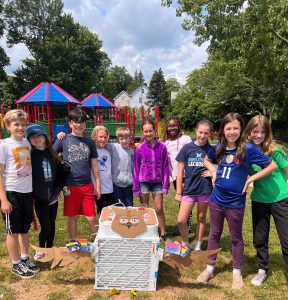
Interestingly, the CR box tested by the EPA, known as ‘Owl Force One’, was built, named, and decorated this spring by a then 9-year-old fifth grader and her classmates with members of the UConn Indoor Air Quality Initiative at Macdonough Elementary School in Middletown, Connecticut. The device, decorated as the school’s owl mascot, was driven in July 2023 on a road trip from Connecticut by UConn researchers to the EPA’s Office of Research and Development in Research Triangle Park, North Carolina for the advanced testing. The road trip to the EPA was sparked by then fifth grader, Eniola Shokunbi, 9, now a six-grader, from Middletown who wrote and mailed UConn a letter inviting them to her public school to help her class build the air cleaner and perform experiments.
“When we first read an article about the Corsi-Rosenthal filters and Eniola wrote a letter to UConn’s Marina Creed, we had no idea what the outcome might be. As a result of the partnership that blossomed, our students learned about air quality, recording data, the scientific process, and so much more,” says Fifth Grade Teacher John Ferrero of Macdonough Elementary School. “The response, support, and collaboration from UConn on this project made this a priceless learning experience for our students and our learning community as a whole.”
Connecticut’s Lieutenant Governor Susan Bysiewicz attended the October 30 press conference of the EPA and UConn to release the scientific testing findings. She applauded both Eniola, the EPA, and UConn’s Initiative including all the women involved in the collaboration, STEM and science.
“Eniola, you had this very powerful idea about how we might be able to keep kids safe in classrooms,” shared Bysiewicz. “And then there was this collaboration between the University of Connecticut and the federal government.”
Bysiewicz added: “That is a very powerful lesson. I love that the University of Connecticut, by the way if you want to go to one of the country’s flagship universities, it’s right in Storrs, Conn. Any of you want to go to UConn? Excellent. They’ll be ready for you!
“Air quality is very important to the Governor and I. So many schools that our kids and young people go to were built 50, 60, 70, 80, 90, 100 or more years ago. And they don’t have good air quality systems,” Bysiewicz said. “Eniola, what I love about your idea, is to make one of these, and have one of these in every classroom in this school, and schools across the state – it solves the problem – and it’s not expensive!”
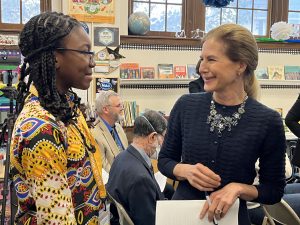
State Sen. Matt Lesser and Middletown Deputy Mayor Vinnie Loffredo also attended the School’s press conference and applauded the local, state and federal collaboration.
Creed’s Initiative co-collaborators are Kristina Wagstrom, Ph.D. of UConn School of Engineering, and Misti Zamora, Ph.D. of UConn School of Medicine.
For over two years the UConn team has been building and donating hundreds of these air filters to the Connecticut community, including the state’s public schools, to fight COVID-19 in classrooms while conducting real world testing of the powers of the DIY air cleaners inside schools and other community settings. The researchers have submitted a manuscript for peer review to further build upon the EPA’s testing results.
In June UConn Health donated 150 free CR boxes to vulnerable members of the community to protect them from the dangers of wildfire smoke particles in the air. Also, as a public service, UConn has donated materials and STEM lesson plans for 100 air filters to the Connecticut Education Association for schools and teachers in need of immediately improved indoor air quality this cold and flu season.
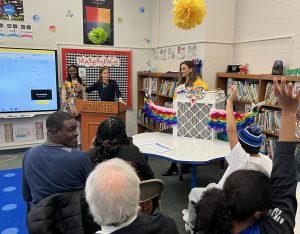
You can learn how to build your own simple, affordable DIY air cleaner with UConn’s simple online directions whether for your home, your classroom, or community setting. Also, view a how-to video by UConn School of Engineering students.
The filtration systems are named for their creators, Dr. Richard Corsi, dean of engineering at the University of California-Davis, and Jim Rosenthal, CEO of Texas-based company Tex-Air Filters.
The UConn Indoor Air Quality Initiative’s cross-campus collaborators include: UConn Health and its Comprehensive Multiple Sclerosis Center, UConn School of Medicine and its Department of Public Health Sciences, UConn School of Engineering, UConn School of Nursing, Connecticut Area Health Education Center Network (CT AHEC), UConn Neag School of Education, and Connecticut Children’s.
Watch the replay of the EPA and UConn press conference releasing the study findings on Oct. 30, 2023 at Macdonough Elementary School.
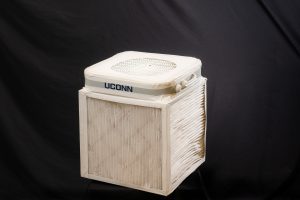
Informational Resources:
Find out how to build your own DIY air purifier.
Learn more about the UConn Indoor Air Quality Initiative.
Do-It-Yourself Air Cleaners: Making Cleaner Air More Accessible | US EPA
Research on DIY Air Cleaners to Reduce Wildfire Smoke Indoors | US EPA
For the latest updates on this Initiative follow on social media.
